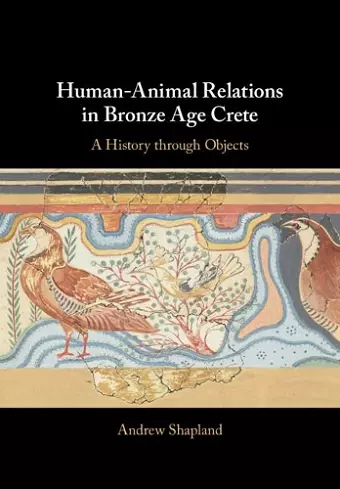Human-Animal Relations in Bronze Age Crete
A History through Objects
Format:Hardback
Publisher:Cambridge University Press
Published:12th May '22
Currently unavailable, and unfortunately no date known when it will be back

Reassesses the animal depictions of Bronze Age Crete in terms of human-animal relations rather than a love of nature.
This book provides a new way of understanding some of the most famous examples of Minoan art, long admired for their naturalism, as the outcome of human-animal relations, drawing on approaches from anthropology and Human-Animal Studies.Archaeologists have long admired the naturalistic animal art of Minoan Crete, often explaining it in terms of religion or a love of the natural world. In this book, Andrew Shapland provides a new way of understanding animal depictions from Bronze Age Crete as the outcome of human-animal relations. Drawing on approaches from anthropology and Human-Animal Studies, he explores the stylistic development of animal depictions in different media, including frescoes, ceramics, stone vessels, seals and wall paintings, and explains them in terms of 'animal practices' such as bull-leaping, hunting, fishing and collecting. Integrating zooarchaeological finds, Shapland highlights the significance of objects and their associated human-animal relations in the history of the palaces, sanctuaries and tombs of Bronze Age Crete. His volume demonstrates how looking at animals opens up new perspectives on familiar sites such as Knossos and some of the most famous objects of this time and place.
ISBN: 9781009151542
Dimensions: 259mm x 182mm x 18mm
Weight: 760g
290 pages